 |
 |
 |
| |
Prevention of Rectal Simian HIV Transmission in Macaques by Intermittent Pre-exposure Prophylaxis with Oral Truvada
|
| |
| |
From Jules: several intermittent PrEP regimens were explored in this small animal study of intermittent PrEP, and the researchers found that taking a 2-dose Truvada regimen consisting of one PrEP dose 1-3 days before plus a second dose immediately after HIV exposure, was as effective and perhaps more effective than daily PrEP. This can be an important finding if confirmed in human trials.
Reported by Jules Levin
CROI Feb 2009
Gerardo Garcia-Lerma*, M-E Cong, J Mitchell, A Youngpairoj, A Martin, D Hanson, R Otten, L Paxton, T Folks, and W Heneine
CDC, Atlanta, GA, US
Background: The efficacy of daily oral pre-exposure prophylaxis (PrEP) with Truvada for the prevention of HIV transmission is currently being evaluated in human clinical trials. There is increasing interest in intermittent PrEP (iPrEP) because of potential cost-effectiveness and lower risks of drug toxicity. We used a repeat-exposure macaque model to investigate if iPrEP given around the time of virus exposure is protective. We also explored the efficacy of intermittent post-exposure prophylaxis (PEP) initiated shortly after virus exposure.
Methods: We evaluated 3 modalities of a 2-dose iPrEP regimen with Truvada in 6 male rhesus macaques by using an established rectal transmission model consisting of 14 weekly virus (simian HIV [SHIV]162p3,10 TCID50) exposures. Truvada at human equivalent dosing was delivered by oral gavage. Drug doses were given at different intervals relative to virus exposure: 2 groups of macaques received the 2 doses of Truvada over a 24-hour period, either 2 hours before and 22 hours after virus exposure (group I) or 22 hours before and 2 hours after exposure (group II). Group III received the first dose of Truvada 3 days before exposure and a second dose 2 hours after exposure. A fourth group of 6 macaques received 2 PEP doses 2 hours and 26 hours after exposure. Infection was monitored by serology and polymerase chain reaction (PCR) amplification of SHIV sequences from plasma and peripheral blood mononuclear cells (PBMC). The Cox proportional hazards model was used to estimate the risk of infection in treated animals relative to 27 untreated controls (6 real-time and 21 historical controls).
Results: Of the 27 untreated macaques, 26 became infected after a median of 2 rectal exposures (range, 1 to 12). Of the 12 macaques that received the 2 Truvada doses over a 24-hour period, 3 of 6 from group I and 5 of 6 from group II were protected; the risk of infection was reduced by 3.9- (p = 0.029) and 15.9-fold (p = 0.007), respectively. Despite early administration of Truvada in group III animals, 5 of 6 macaques remained protected after 14 challenges with a reduction in the risk of infection of 14.5-fold (p = 0.01). The risk of infection was also significantly lower (3.8-fold) in group IV macaques that received a 2-dose PEP regimen (p = 0.033); 3 of the 6 animals remained protected after 14 challenges.
Conclusions: Our results in a repeat-exposure macaque model suggest that effective PrEP with Truvada does not require daily dosing, define several highly protective iPrEP modalities, and support iPrEP efficacy trials in humans.
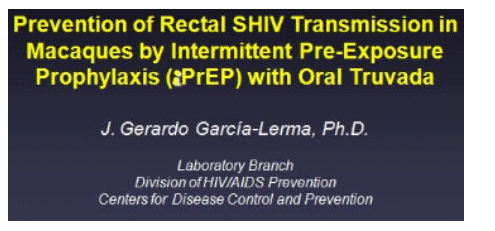
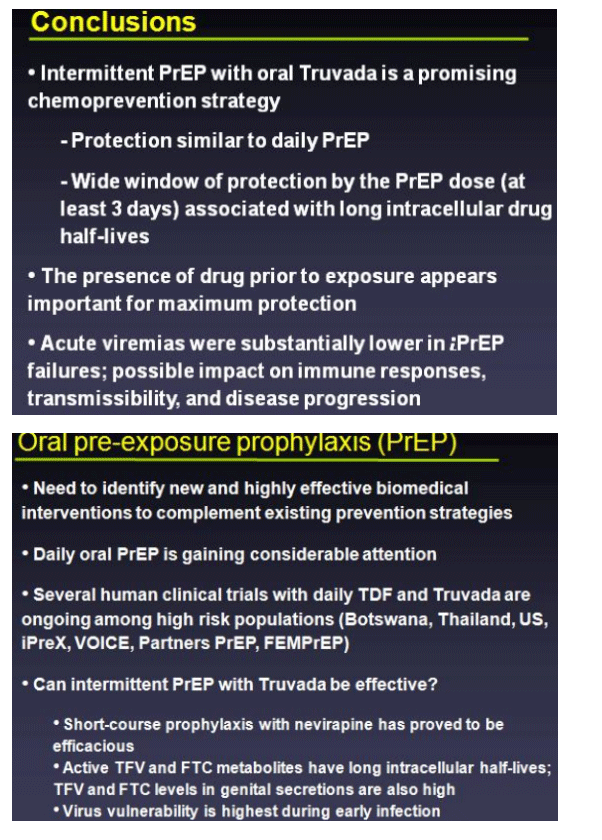
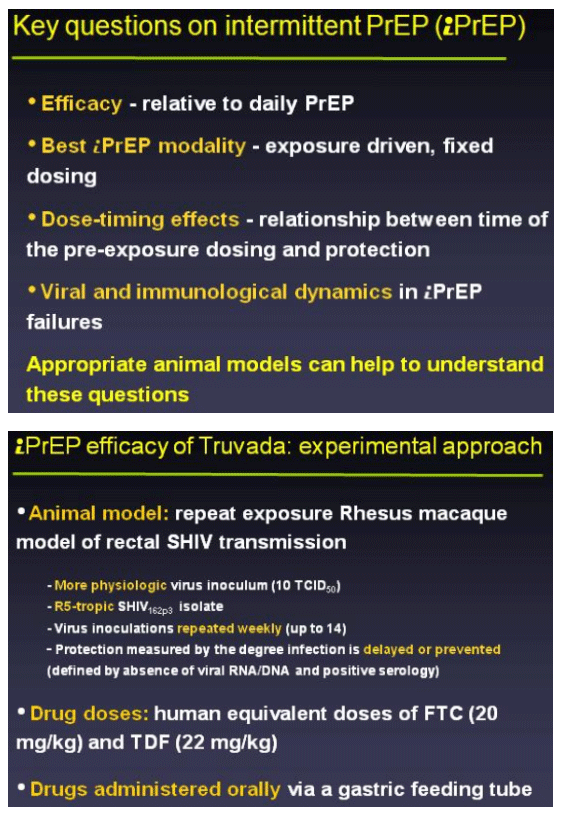
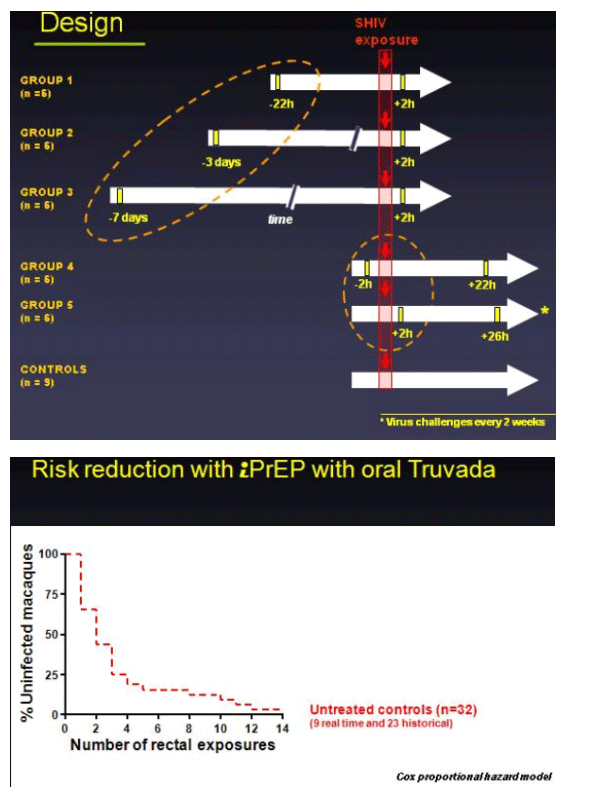
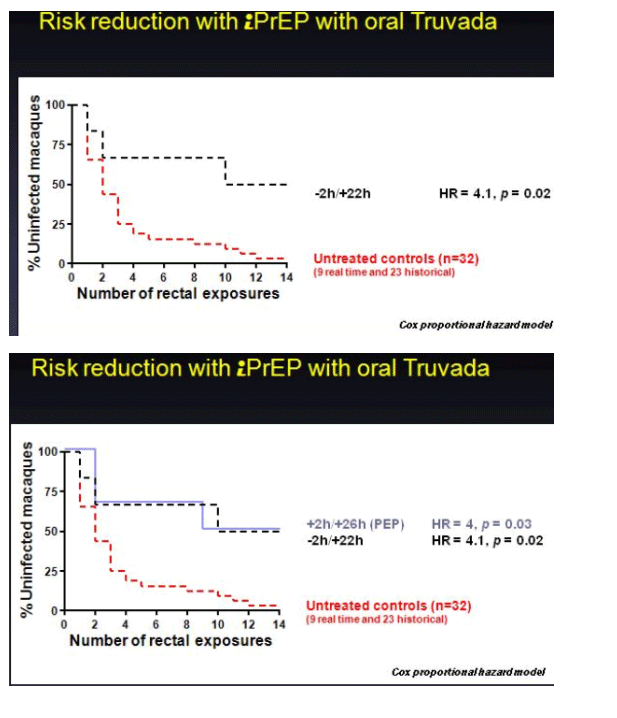
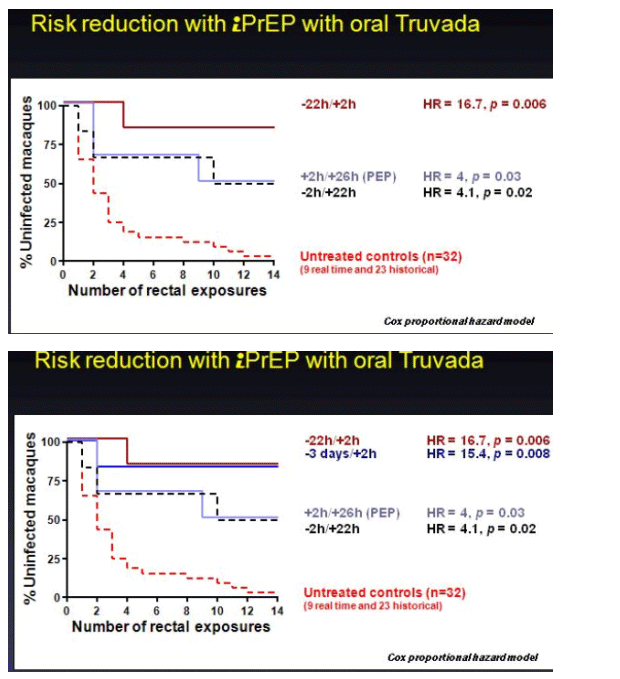
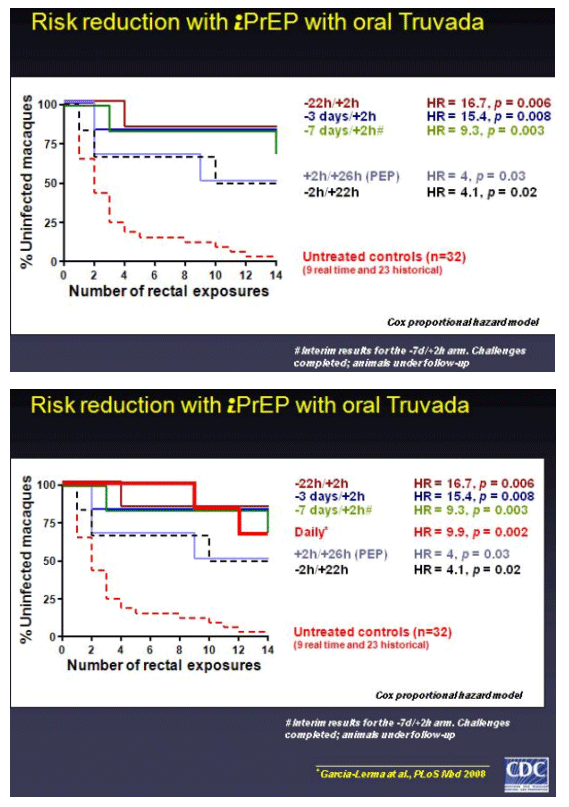
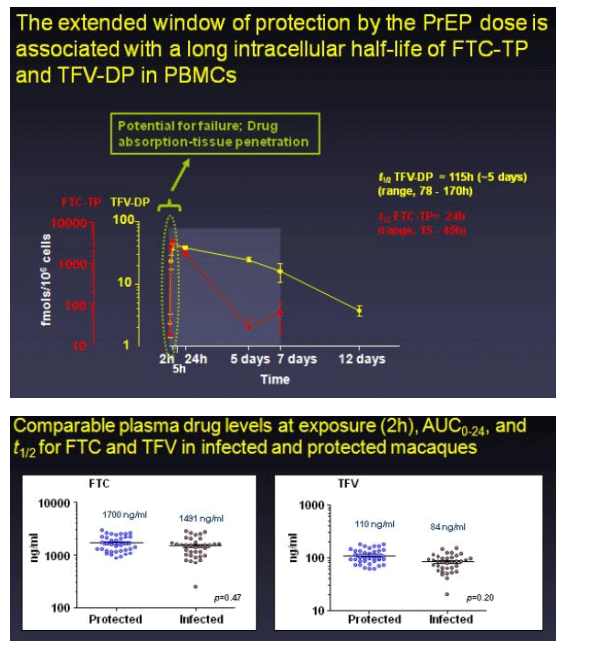
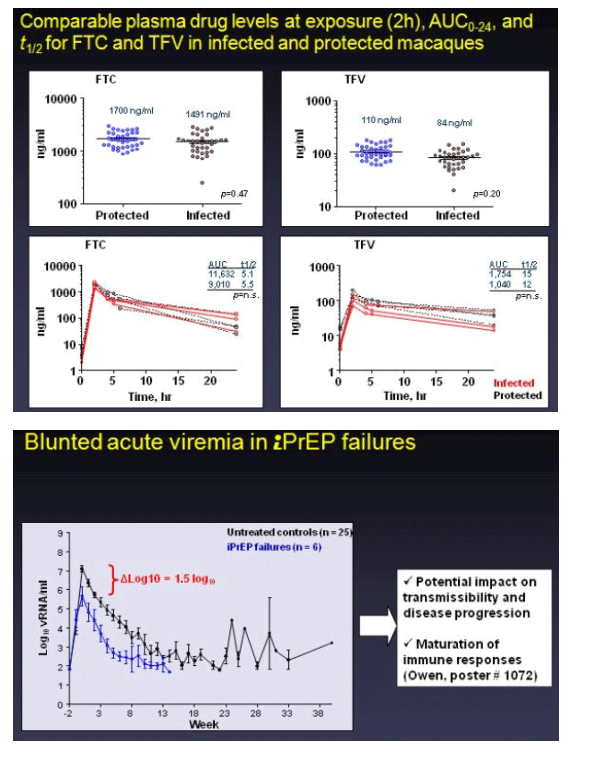
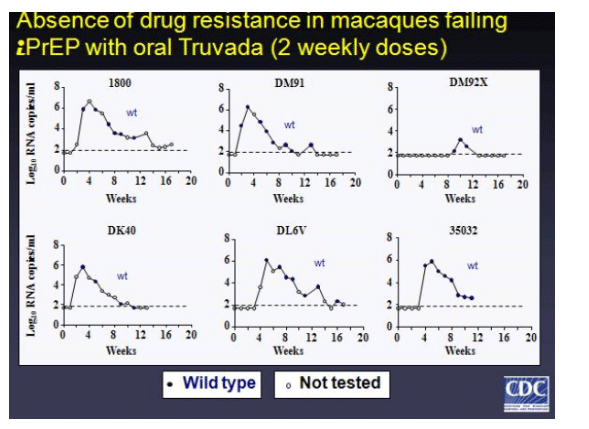
Delayed Antibody Maturation against p27 and gp41 in Rhesus Macaques Infected during Daily or Intermittent Pre-exposure Prophylaxis with Emtricitabine or Emtricitabine + Tenofovir
CROI abstract 1072
Michele Owen*, K Curtis, S Kennedy, M-E Cong, D Hanson, W Heneine, and G Garcia-Lerma
CDC, Atlanta, GA, US
Background: Pre-exposure prophylaxis (PrEP) is a promising biomedical intervention to prevent HIV transmission and its efficacy is being evaluated in human clinical trials. We recently found blunted acute viremia in macaques failing daily or intermittent PrEP with emtricitabine (FTC) or FTC/tenofovir (TFV). Decreased virus replication may alter maturation of host immune responses and the performance of serologic assays designed to distinguish recent and long-term HIV infection. As a model for altered immune response during PrEP, we compared maturation of antibody responses against p27 and gp41 among macaques failing daily or intermittent PrEP and untreated controls.
Methods: Infection was monitored by an in-house real-time polymerase chain reaction (RT-PCR) assay and the Bio-Rad Genetic SystemsTM HIV-1/HIV-2 PLUS O EIA. Antibody avidity for simian immunodeficiency virus (SIV) p27 and HIV-1 gp41 was measured over 26 weeks in 17 macaques infected with simian-human immunodeficiency virus (SHIV) 162p3. Of these macaques, 6 were infected during daily and 5 during intermittent PrEP with FTC or FTC/TFV, and 6 were untreated controls. Antibody avidity was measured with a Luminex bead-based assay in which samples were diluted (1:50) and tested in the presence and absence of 0.1 M diethylamine. Changes in antibody avidity over time were compared using a linear mixed effects model. Maximum AI levels were compared using the Wilcoxon rank sum test.
Results: The median time to seroconversion following detectable RNA was comparable between the PrEP-treated animals (2 weeks) and controls (1.5 weeks). However, avidity maturation against p27 was significantly delayed in PrEP failures compared to controls (p <0.001); maximum AI values within 6 months were also significantly lower (medians 8.3 and 55.1, respectively, p = 0.03). Maturation of anti-gp41 Abs increased at different rates (p <0.001) and maximum levels within 6 months were also significantly lower in PrEP failures compared to controls (medians 8.9 and 16.5, respectively, p = 0.03). No significant difference in maturation of avidity within 6 months was noted between macaques failing daily versus intermittent PrEP.
Conclusions: We demonstrate a delayed maturation of antibody avidity for p27 and gp41 in macaques failing PrEP. Altered antibody maturation may have implications for virus evolution and performance of avidity-based assays designed to classify recent and long term HIV infection in cross-sectional populations. Our findings suggest that avidity-based assay performance might be altered if PrEP is implemented and, as a result, could misclassify long-term infections as incident.
|
| |
|
 |
 |
|
|